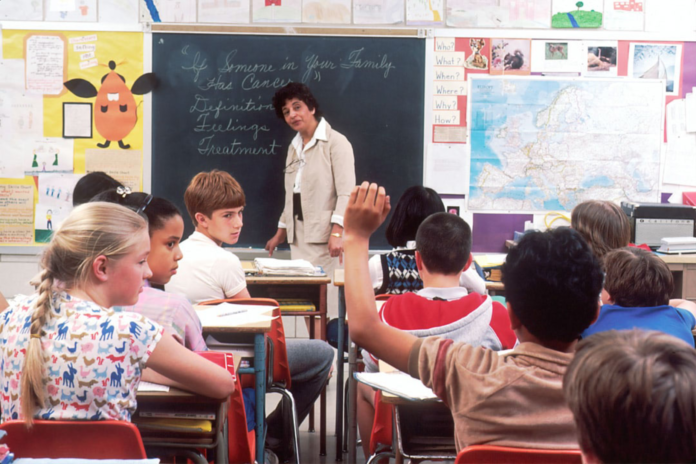Minnesota schools, like schools across the nation, have been striving for decades to shrink the stubborn racial learning gap. The frustration caused by repeated failure accounts, in large part, for the support behind the latest proposal: the Page-Kashkari constitutional amendment that would make a “quality” education a “fundamental right.”
Unfortunately, the amendment is virtually certain not to produce the desired academic improvements. Instead, its adoption would likely lead to a loss of democratic control over education, coupled with mind-boggling financial outlays and continued low performance.
The amendment’s noble-sounding, aspirational language is appealing at first glance. It purports to give “all children” a “fundamental right” to a “quality public education” that “fully prepares them” for “participation in the economy, our democracy, and society.”
Retired Minnesota Supreme Court Justice Alan Page and current Federal Reserve Bank of Minneapolis President Neel Kashkari say they hope to stimulate legislative reform. But the amendment’s powerful legal buzzwords make clear it was crafted to open the way for enhanced judicial control of Minnesota’s educational policy and funding. This course has failed, at great cost, in other states that have tried it.
The amendment carries such potential for mischief, in part, because it would create a “positive” right. It would not just limit government power, as a right to free speech does, but would require the state to guarantee that every child achieve a specific educational outcome. That’s like purporting to give all children a constitutional right “to be a successful high school athlete” or “to have a happy, healthy life.”
Put another way, the amendment mandates an outcome we don’t know how to achieve and doesn’t specify how we are to accomplish it.
Moreover, the amendment would make ensuring this new “fundamental right” our state’s “paramount duty.” In legalese, that means K-12 funding would always get “first dollar,” crowding out vital priorities such as higher education, public safety and health care in hopes that someday “quality” schools will be achieved.
Virtually no other state has produced enduring academic gains or significantly narrowed the racial gap by turning education over to the courts. In New Jersey, for example, in the late 1980s the state Supreme Court ordered lavish funding in low-income districts for reforms ranging from universal pre-K to massive new construction and social services, funded by the largest sales- and income-tax hike in state history. Today some districts spend as much as $34,000 per student. Yet a recent study revealed that academic performance has not significantly improved, and in some cases has fallen.
Some claim the Page-Kashkari amendment would boost academic achievement in Minnesota, because it requires student performance to be measured against “uniform achievement standards.”
Yet who would define these standards, and determine whether students were achieving them? Our state has a dismal track record of jettisoning meaningful academic standards — precisely because some kids fail to meet them. Paradoxically, this is often done in the name of “equity.”
For example, in 2013, after a yearslong effort by standards advocates to create reading, writing and math standards with consequences, the Legislature dropped required minimum test scores for a high school diploma because too many students couldn’t meet them. Today, graduation rates are rising for low-income and minority students, but a diploma has become virtually meaningless.
We struggle even to keep basic skills tests for teachers, for the same reason. These tests are no longer required for new teachers. Now Gov. Tim Walz’s 2020 education agenda proposes to eliminate basic skills tests for all teachers.
Ditto for minimal standards of student behavior. In the name of equity, in 2017 the Minnesota Department of Human Rights threatened to take 43 school districts and charter schools to court unless they modified discipline policies to eliminate racial differences in suspensions, regardless of actual student misconduct. As a result, students are finding it difficult to learn in increasingly chaotic classrooms.
Is it realistic to believe the Minnesota Supreme Court can turn this around? When it comes to education reform, courts know how to do one thing: hand out money.
How we can do better? Mississippi, of all places, is showing the way. In 2019, it ranked No. 1 in the country for gains in fourth-grade reading and math on the National Assessment of Educational Progress. Mississippi spends far less per pupil than Minnesota, and 75% of its students — vs. 37% of ours — get free or reduced lunch. Yet today, its low-income students are third in the nation on fourth-grade reading, while Minnesota’s are 40th.
Mississippi owes its progress largely to an intense early reading policy of identification, intervention and monitoring. As a last resort, third-grade students who can’t read are retained for a year of enriched, individualized instruction. Our educational establishment has rejected many elements of the approach that accounts for Mississippi’s success.
Rather than producing academic gains, the Page-Kashkari amendment would open a Pandora’s box of lawsuits. Plaintiffs would sue to compel their own vision of “quality” education, ranging from universal public-school preschool for the very youngest children, to comprehensive sex education, to racial quotas for students and teachers in every classroom.
Raising academic achievement requires not court mandates but a commitment to hard work by educators, students and parents. So long as we believe our racial learning gap is the result of a flawed state Constitution, we will fail.
Katherine Kersten is a senior policy fellow at the Center of the American Experiment. She is at xnxrefgra@tznvy.pbz.
Katherine Kersten
Katherine Kersten, a writer and attorney, is a Senior Policy Fellow at Center of the American Experiment. She served as a Metro columnist for the Star Tribune (Minneapolis) from 2005 to 2008 and as an opinion columnist for the paper for 15 years between 1996 and 2013. She was a founding director of the Center and served as its chair from 1996 to 1998.
















